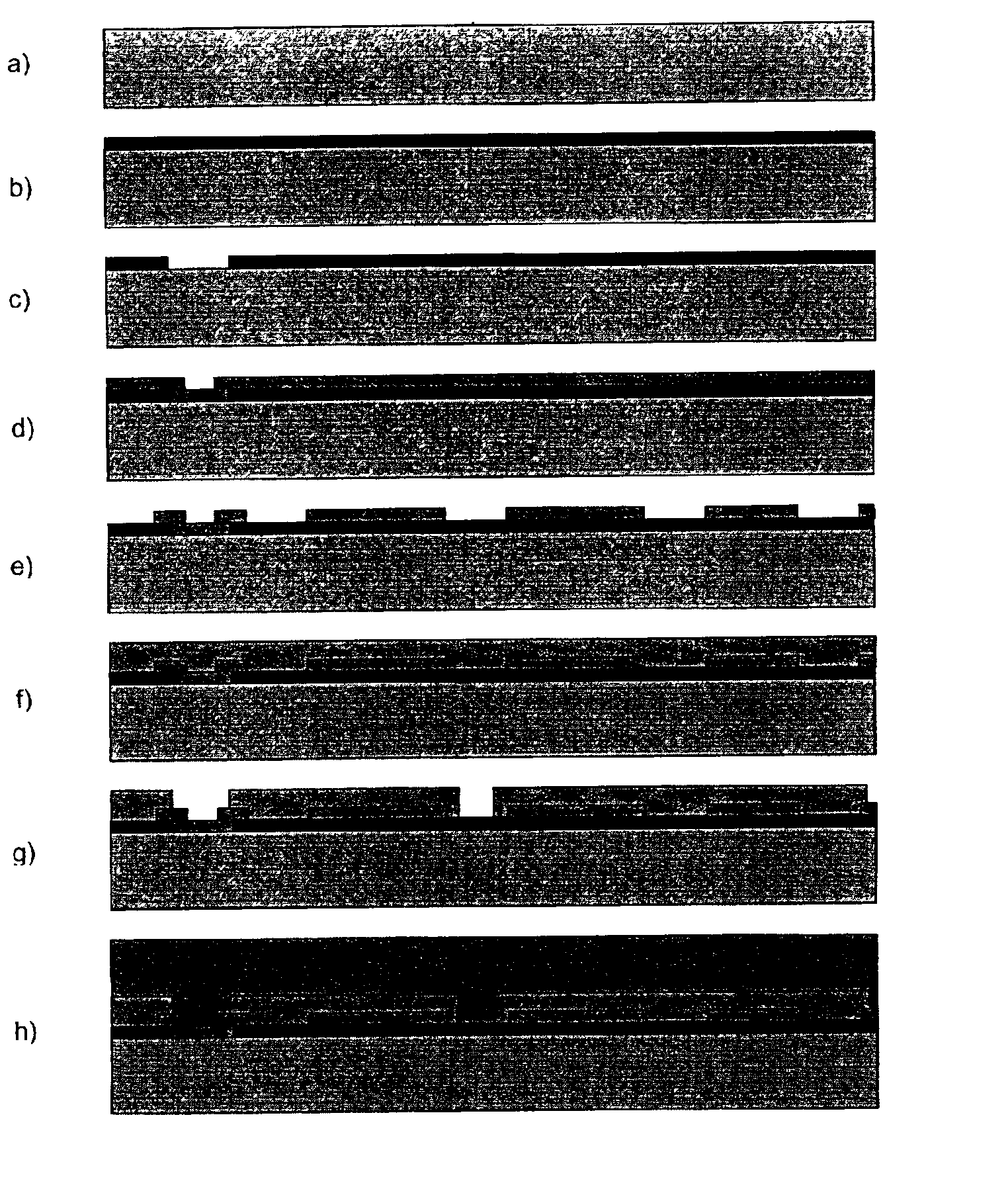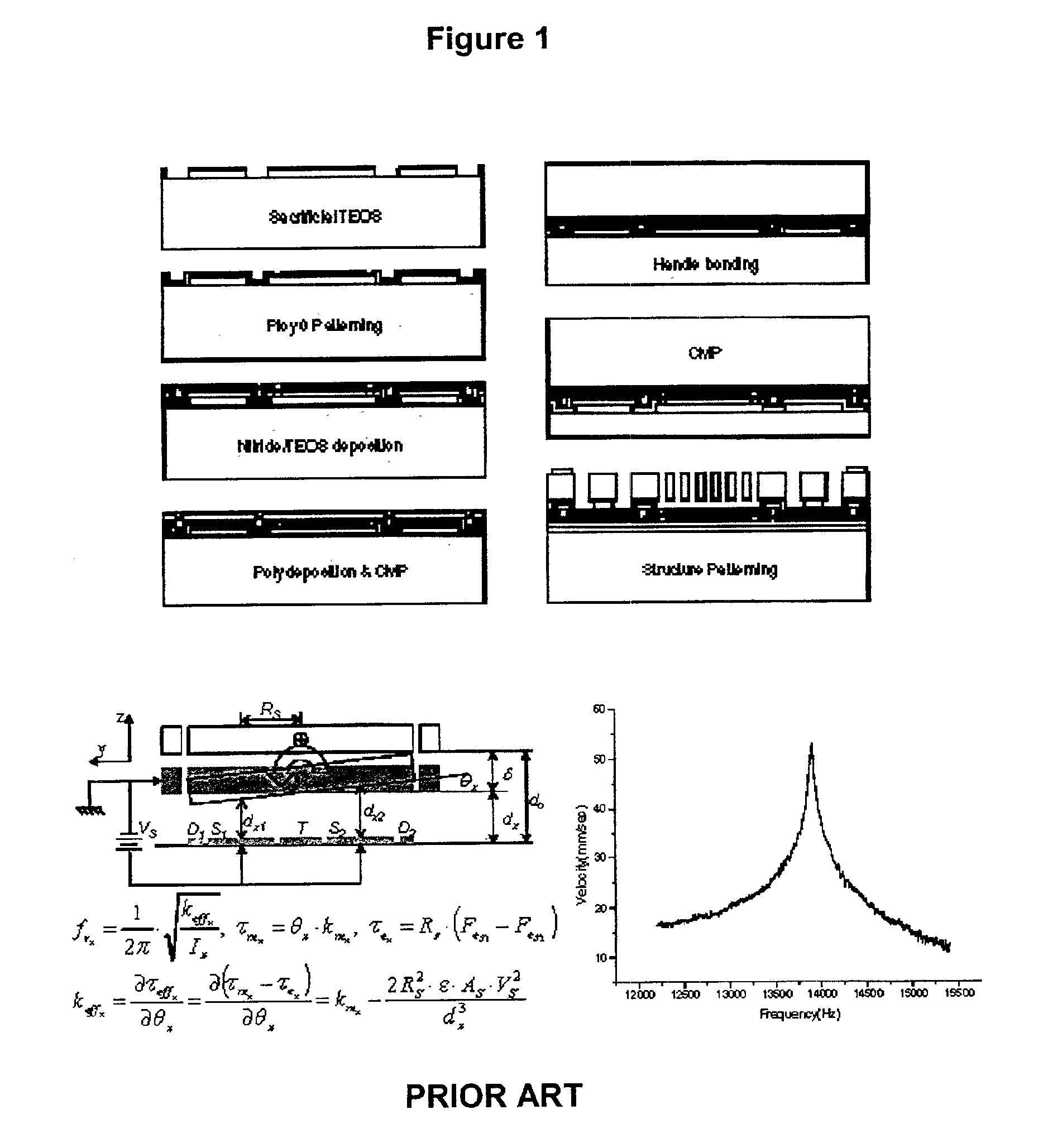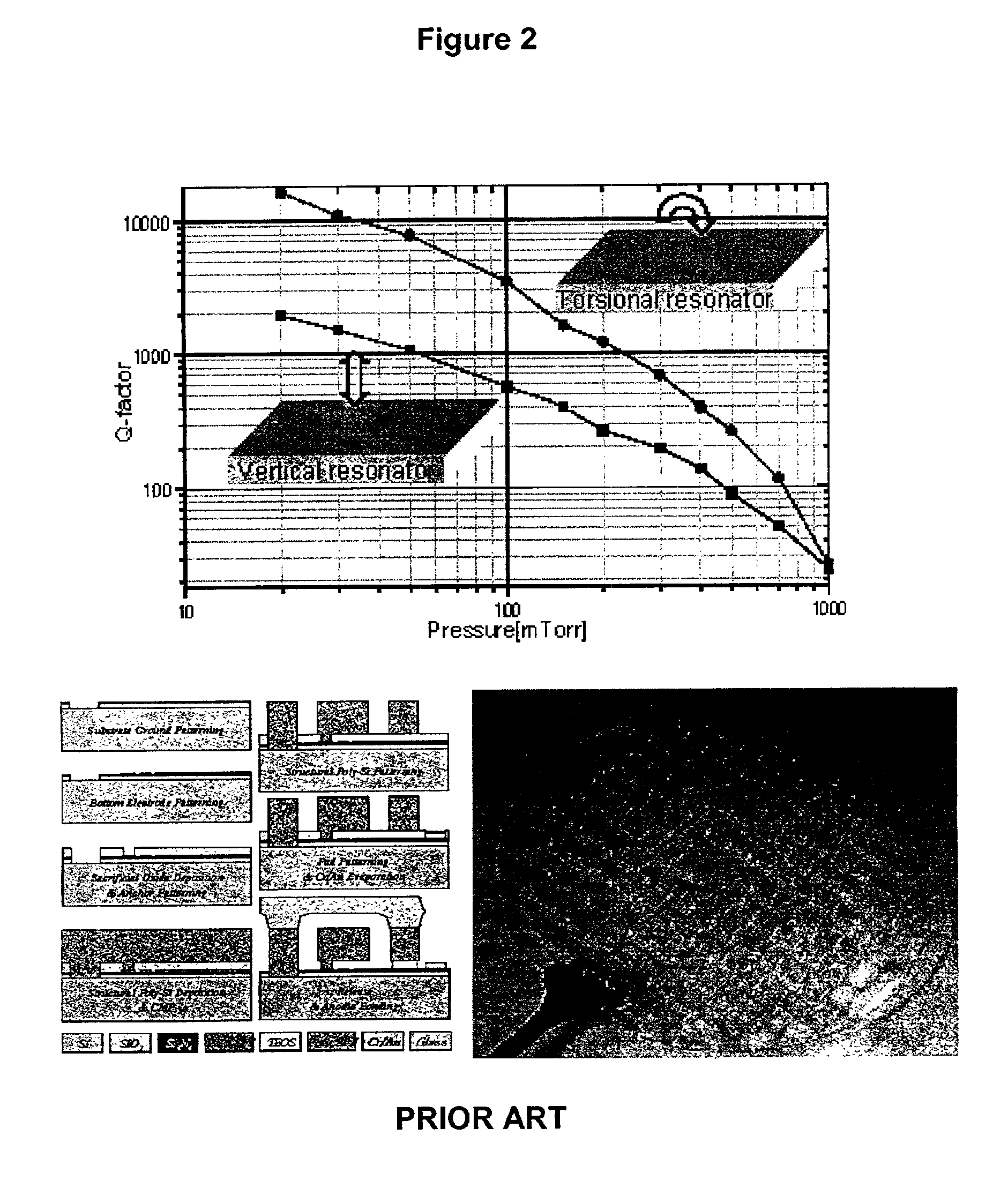Fabrication of microstructures with vacuum-sealed cavity
a vacuum sealing and microstructure technology, applied in the direction of acceleration measurement using interia forces, turn-sensitive devices, instruments, etc., can solve the problems of unsatisfactory glass frit bonding technique, unsatisfactory direct wafer bonding technique of two substrates, and little is known about this program. , to achieve the effect of long-term reliability
- Summary
- Abstract
- Description
- Claims
- Application Information
AI Technical Summary
Benefits of technology
Problems solved by technology
Method used
Image
Examples
Embodiment Construction
[0075]Reference will now be made to FIG. 8, which shows at steps (a) to (t), an integrated process for forming for a single-substrate, wafer-level protective cap as described in our co-pending U.S. patent application Ser. No. 10 / 120,528, filed Apr. 12, 2002, entitled ‘Wafer-level MEMS packaging’, the contents of which are herein incorporated by reference. In FIG. 8:[0076]step a) shows the silicon substrate;[0077]step b) shows the pad oxide growth;[0078]step c) shows the pad oxide patterning;[0079]step d) shows the surface polysilicon deposition;[0080]step e) shows the surface polysilicon patterning;[0081]step f) shows the deposition of the lower sacrificial material;[0082]step g) shows the patterning of the lower sacrificial material;[0083]step h) shows the structural isdp deposition and post-deposition doping;[0084]step i) shows the deposition and patterning of titanium nitride;[0085]step j) shows the photolithography and deep-etch of the Structural ISDP;[0086]step k) shows the dep...
PUM
| Property | Measurement | Unit |
|---|---|---|
| temperature | aaaaa | aaaaa |
| temperature | aaaaa | aaaaa |
| temperature | aaaaa | aaaaa |
Abstract
Description
Claims
Application Information
 Login to View More
Login to View More - R&D
- Intellectual Property
- Life Sciences
- Materials
- Tech Scout
- Unparalleled Data Quality
- Higher Quality Content
- 60% Fewer Hallucinations
Browse by: Latest US Patents, China's latest patents, Technical Efficacy Thesaurus, Application Domain, Technology Topic, Popular Technical Reports.
© 2025 PatSnap. All rights reserved.Legal|Privacy policy|Modern Slavery Act Transparency Statement|Sitemap|About US| Contact US: help@patsnap.com



